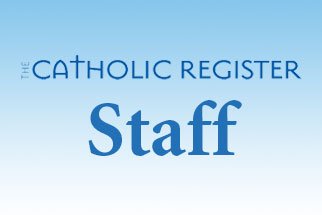As The Catholic Register marks its 125th year, we will dig into our archive to unearth interesting stories from the pages of the past. This week, we revisit St. André Bessette, the humble Holy Cross brother who was the prime mover in the building of St. Joseph’s Oratory in Montreal and is credited with countless healings through his devotion to St. Joseph. He died on Jan. 6, 1937 (his feast day is Jan. 7) at the age of 91 and was made a saint in 2010. The following article appeared in The Catholic Register on Aug. 25, 1927, shortly after Br. André turned 83 years old.
Voices from The Register vault: First World War, women's suffrage and anti-Catholic discrimination
Throughout this 125th anniversary year of The Catholic Register, we will be celebrating the rich history of Canada’s oldest Catholic newspaper. This week, rather than our usual Letters to the Editor, we have dipped into the archive to see what issues the newspaper was addressing in 1918 as The Register turned 25 years old.
Christmas Drawing Contest 2017 Winners
Jasmeen Arcentales says she wants to be an artist when she grows up. Judging by her entry in The Catholic Register’s annual Christmas drawing contest, we’d say she’s an artist already.
Let us wish shalom-peace for all humanity
Editorial: World must listen
Canadian saint lights up church in France
Chaplain's letter to bereaved wife of soldier killed in Vimy Ridge
Chaplain’s Letter to Bereaved Wife
The following letter was sent to Mrs. Gorrell, lately of Toronto, at Preston, England, where she went to be nearer her husband when he left for overseas. She was received into the Church at Holy Rosary Church, Toronto, previous to her marriage to Corporal Gorrell nearly four years ago. A little boy is proving a real consolation to the mother in her bereavement:
Dear Mrs. Gorrell,
You must have received official notification of the death in action of your dear devoted husband, Cpl. R. Gorrell, 14th Canadian Battalion. He was instantly killed on the morning of the 9th inst. during the battle of Vimy Ridge. It is sad news for you, and I can assure you that our sympathy is real and deep. I knew Cpl. Gorrell quite well as he was a member of my congregation. He was a good soldier, devoted to duty and enjoying the full confidence of his officers and the affection of his comrades. His loss is keenly felt my us all. I especially feel his loss quite deeply, as he was one of my best parishioners and his example was of great help to me in my work among the soldiers.
It will afford you some consolation to know that he was a good Christian man, always ready to give to God what belonged to Him. He kept his soul readiness for any sacrifice that God might demand of him. He prepared himself for this great battle by a pious and worthy Holy Communion, and I feel sure that Our Saviour has accepted his sacrifice and rewarded him for that greatest of all acts of Charity, to give one's life for others.
He was reverently laid to rest beneath the arms of a beautiful Cross erected by the Battalion. I blessed his grave and offered up the Holy Sacrifice for the eternal repose of his soul.
We have prayed for you also, that God may grant you His consoling grace in this your hour of trial.. May He give you the strength and courage to bravely accept His Divine Will and to patiently bear the heavy cross which He has allotted to you.
With deepest sympathy,
A. J. LABOULE,
Capt. C.F.Subscribe to our Digital Edition to have unlimited access to The Catholic Register's 125-years worth of archived stories.


